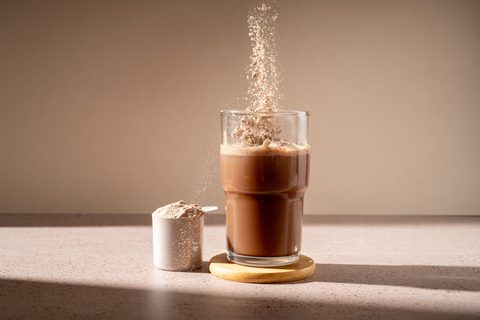

Why Dairy Proteins Aren’t Always Easy to Work with – And What You Can Do About It
Dairy proteins, especially whey and casein, have earned their reputation as gold-standard ingredients in nutrition and functional food products. Whether you’re formulating a sports recovery drink, a high-protein yoghurt, or a clinical nutrition product, it’s hard to beat the bioavailability, amino acid profile, and functional flexibility that dairy proteins bring to the table.
But if you’ve ever worked with them, you’ll know that dairy proteins don’t always play nicely in modern formulations.
You might be trying to get whey into a clear acidic beverage and end up with cloudiness or sediment. Maybe your heat-treated high-protein drink starts forming aggregates or gels after UHT. Or perhaps you’re using hydrolysed whey for faster absorption but running into bitterness that’s hard to mask. These aren’t niche issues - they're common roadblocks in product development, especially as the demand for high-protein, clean-label, sensory-friendly foods and drinks continues to surge.
Fortunately, the solution doesn’t involve compromising on quality or functionality. It involves enzymes and a bit of clever protein modification.
The Case for Enzymes in Dairy Protein Processing
At its core, enzyme technology is about precision. By using proteases to selectively cleave peptide bonds in whey or casein, food developers can reshape the protein’s molecular structure and, with it, its behaviour in a formulation.
Take solubility, for example. Native whey proteins don’t perform well in acidic environments. They can unfold, expose hydrophobic regions, and start to aggregate, leaving you with a hazy or unstable beverage. But once partially hydrolysed with the right enzymes, those same proteins break down into short-chain peptides that remain soluble and stable, even in low-pH systems like sports waters and flavoured RTDs (ready to drink).
Heat stability is another big win. During thermal processing (e.g. pasteurisation, UHT), proteins can denature and form networks that impact texture and appearance. But hydrolysed whey, thanks to its smaller peptide size and reduced tendency to aggregate, can handle heat far more gracefully, minimising viscosity spikes, phase separation, and sedimentation in shelf-stable products.
Then there’s digestibility. Hydrolysis mimics the early stages of digestion, breaking proteins down into di- and tripeptides that the body can absorb more efficiently. This is crucial not only for athletes looking for fast post-workout recovery, but also for medical nutrition and active ageing markets where bioavailability and digestive tolerance are key.


What About the Bitterness?
It’s no secret that hydrolysed whey protein (WPH) can develop a bitter taste. That’s a result of certain hydrophobic peptide fragments being exposed during hydrolysis. But carefully designed enzyme solutions allows control over the extent and specificity of hydrolysis, limiting the formation of these peptides.
By selecting enzymes with defined cleavage patterns, or by combining endo- and exopeptidases, we can produce hydrolysates with improved flavour profiles while still delivering all the benefits of enhanced functionality and digestibility. This opens up possibilities for lighter, more refreshing beverage formats where traditional dairy proteins would struggle to perform.
Enzymes as Enablers of Innovation
At Biocatalysts, we develop custom enzyme solutions that give food and beverage developers precise control over protein behaviour. Whether you're looking to:
- Increase protein clarity in acidic drinks
- Improve the heat stability of high-protein RTDs
- Reduce viscosity in creamy applications
- Enhance digestibility for clinical or performance nutrition
- Minimise bitterness in hydrolysed protein formulations
…our enzymes can help you make it happen - with the technical support to guide you from concept to commercialisation.
Dairy proteins may be tried and true, but the demands of today’s formulations require more than just adding whey to the label. With enzyme technology, we can reshape how dairy proteins perform, pushing the boundaries of what’s possible in functional foods and beverages.
Looking to get the most out of your dairy protein? Our team of application experts works closely with you to understand your specific substrate and formulation goals. Whether you're aiming for better solubility, cleaner flavour, or improved stability, we’ll help you identify the right enzyme solution - designed to perform in your product, your process, and your market. Let’s create functionality that works for you.